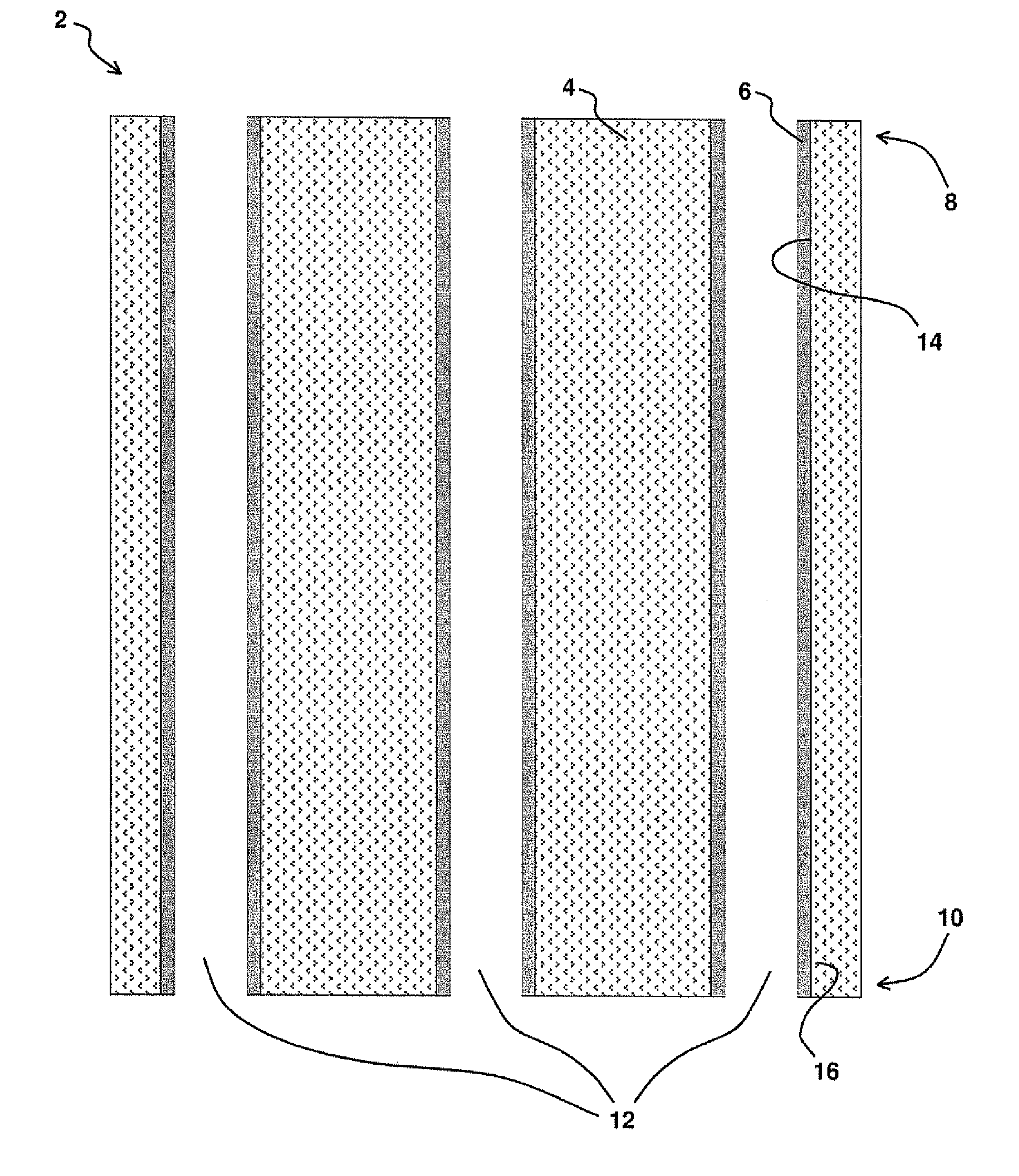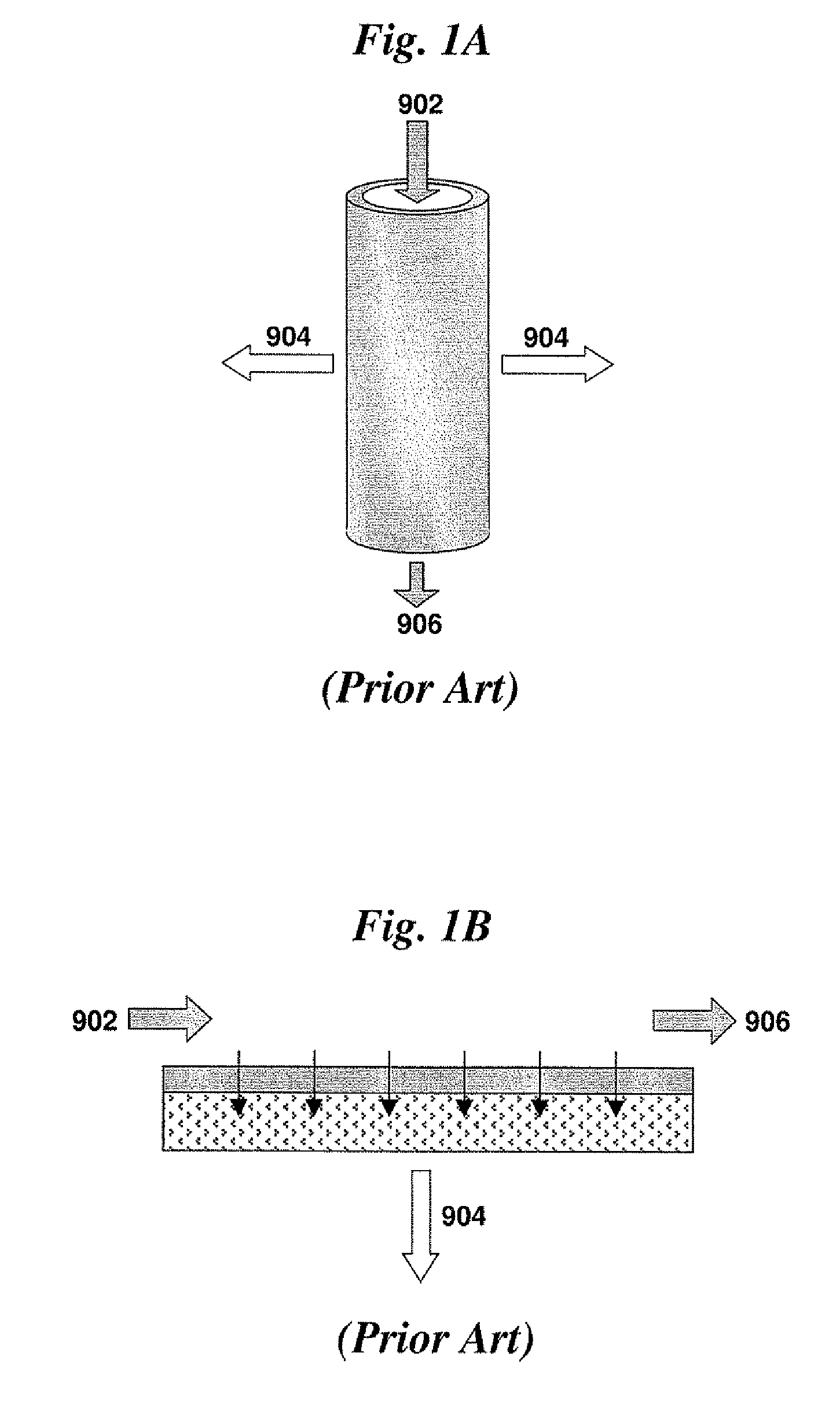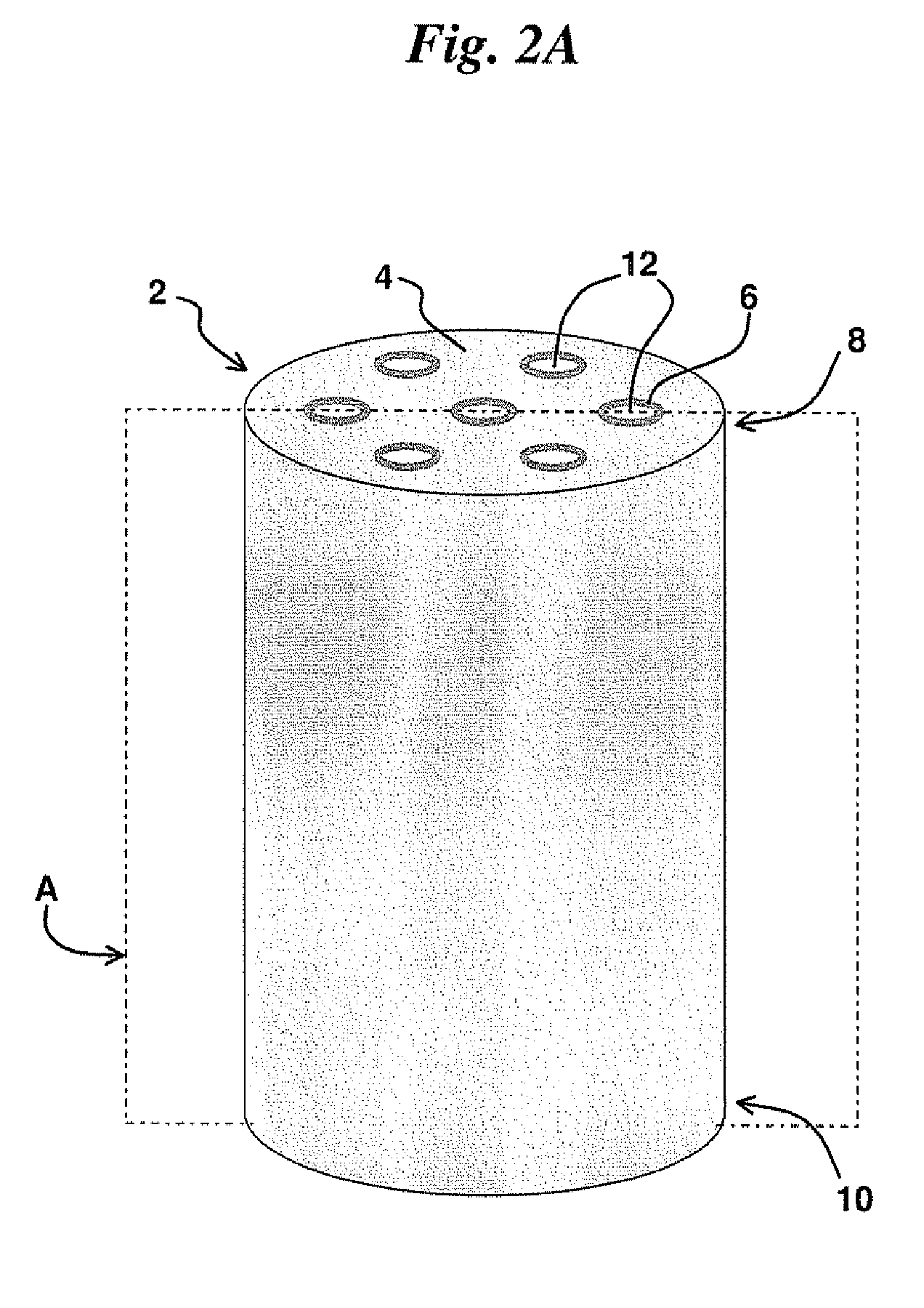Polymer Hybrid Membrane Structures
a hybrid membrane and polymer technology, applied in the direction of membranes, separation processes, transportation and packaging, etc., can solve the problems of capital and energy-intensive processes, poor thermal and chemical stability, and process drawbacks
- Summary
- Abstract
- Description
- Claims
- Application Information
AI Technical Summary
Benefits of technology
Problems solved by technology
Method used
Image
Examples
example 1
Materials Used in the Preparation of Hybrid Membrane Structures
[0120]Three ceramic monoliths based on TiO2, SiO2, and alpha-alumina were coated with polymeric membrane.
[0121]The TiO2 and SiO2 based ceramic monoliths had a pore size of 50 nm and 5 nm, respectively, and an intermediate layer was not coated on the TiO2 and SiO2 based ceramic monoliths.
[0122]FIG. 6 is an illustration of the cross-section of the alpha-alumina based ceramic monolith membrane support used in these experiments. It was produced by extrusion and had a mean pore size of about 3.5 microns, a porosity of 45%, an outer diameter of 9.7 mm, and a length of 131 mm. The alpha-alumina based ceramic monolith membrane support comprised 19 rounded channels (mean diameter about 0.75 mm) being uniformly distributed over the cross-section. An alpha-alumina modification coating layer with mean pore size about 100 nm was first deposited on the support at about 10 microns thickness, and a gamma-alumina layer was further deposi...
example 2
Preparation of Hybrid Membrane Structures Using Ceramic Monoliths Based on Either TiO2 or SiO2
[0124]PEIm or PAAm was coated onto the substrate as the first layer (the bottom layer) of the polymer membrane, in part because it was thought that PEIm or PAAm contain a large amount of amino-groups which would provide a matrix for CO2 transport, for example, through formation of carbamate intermediates, as shown in the scheme set forth in FIG. 8. In FIG. 8, arrow 80 refers to an absorption process on the feed side, and arrow 82 refers to a desorption process on the permeate side.
[0125]PVAAm contains 12% mol vinylamine and itself possesses the separation property for CO2. It is also believed to be a good membrane formation material even without crosslinking. In this work, the PVAAm, together with the PAAm, was coated as the second layer (the top layer). It is believed that this combination gives the second (top) layer not only good gas separation capacity but also provides protection to t...
example 3
Permeability Testing
[0135]This Example 3 describes permeability tests of the hybrid membrane structure using the gamma-alumina coated alpha-alumina support. As described in Example 1, the gamma-alumina coated alpha-alumina support is an alpha-alumina based ceramic monolith having two modification coating layers: a 10 micron thick modification coating layer having a mean pore size of about 100 nm and a 1-2 micron thick gamma-alumina layer having a mean pore size of about 5 nm.
[0136]Two hybrid membrane structures were prepared using this gamma-alumina coated alpha-alumina support. The first used PAAm as the polymeric amine-containing membrane and did not include a polymeric protection layer. The PAAm was applied to the gamma-alumina intermediate layer using the procedure described in Example 2, and it was crosslinked using GPTE, also using the procedure described in Example 2. The second used PAAm as the polymeric amine-containing membrane and also included a PVAAm protection layer. T...
PUM
| Property | Measurement | Unit |
|---|---|---|
| Pore size | aaaaa | aaaaa |
| Nanoscale particle size | aaaaa | aaaaa |
| Hydrophilicity | aaaaa | aaaaa |
Abstract
Description
Claims
Application Information
 Login to View More
Login to View More - R&D
- Intellectual Property
- Life Sciences
- Materials
- Tech Scout
- Unparalleled Data Quality
- Higher Quality Content
- 60% Fewer Hallucinations
Browse by: Latest US Patents, China's latest patents, Technical Efficacy Thesaurus, Application Domain, Technology Topic, Popular Technical Reports.
© 2025 PatSnap. All rights reserved.Legal|Privacy policy|Modern Slavery Act Transparency Statement|Sitemap|About US| Contact US: help@patsnap.com



